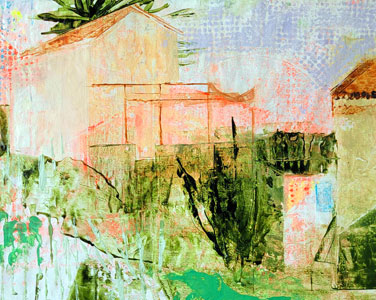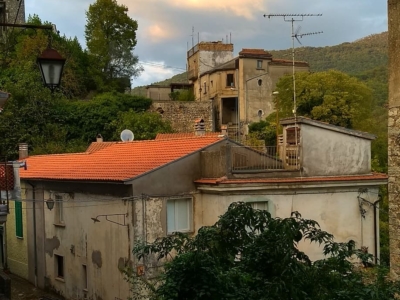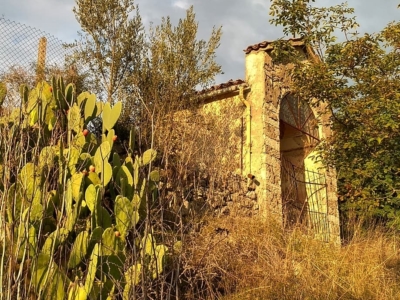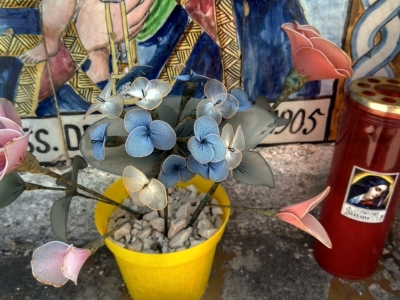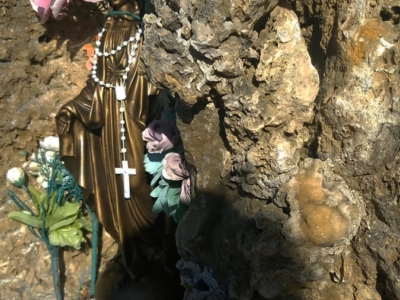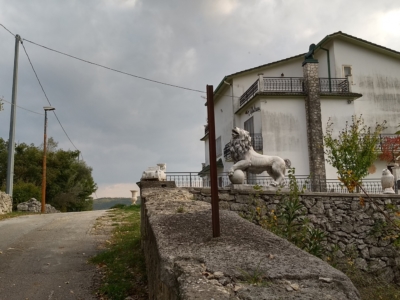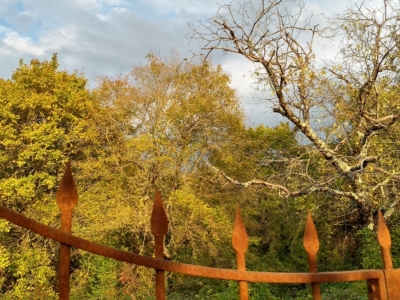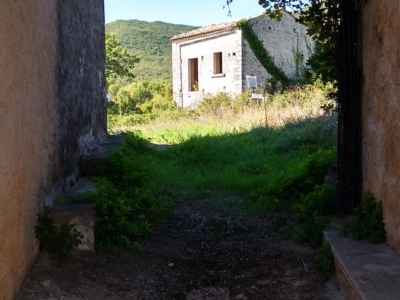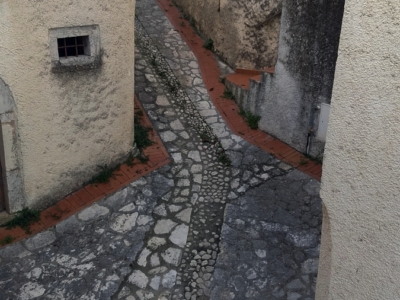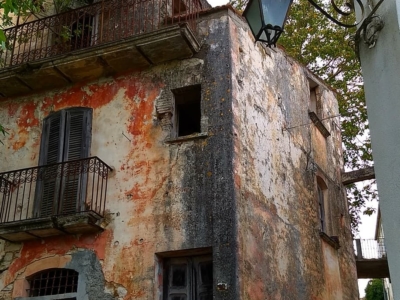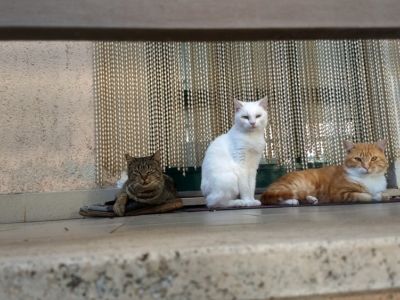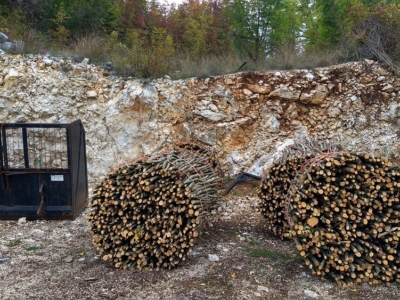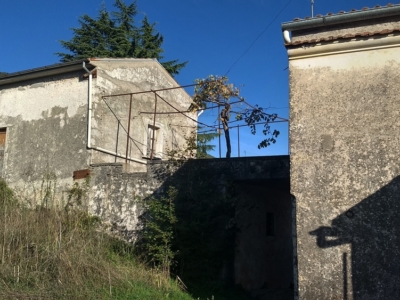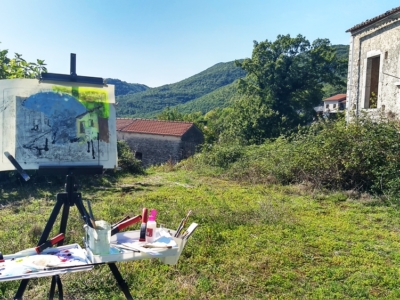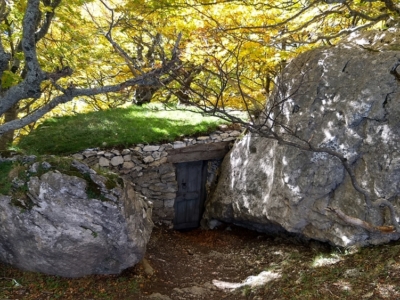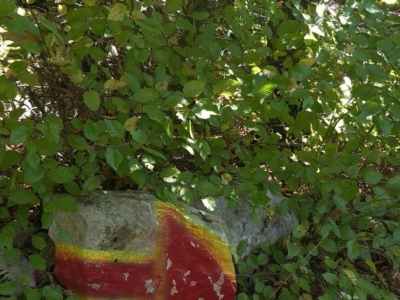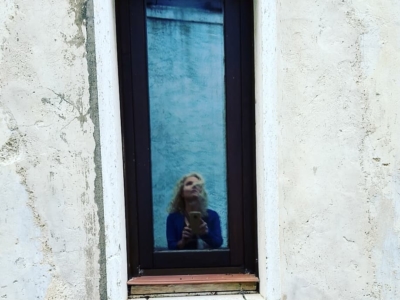[alg_back_button]
In October 2019 I was selected for the TAKING TIME / PRENDENDO TEMPO Residency Programme, at The Museum of Loss and Renewal located in Collemacchia, Italy.
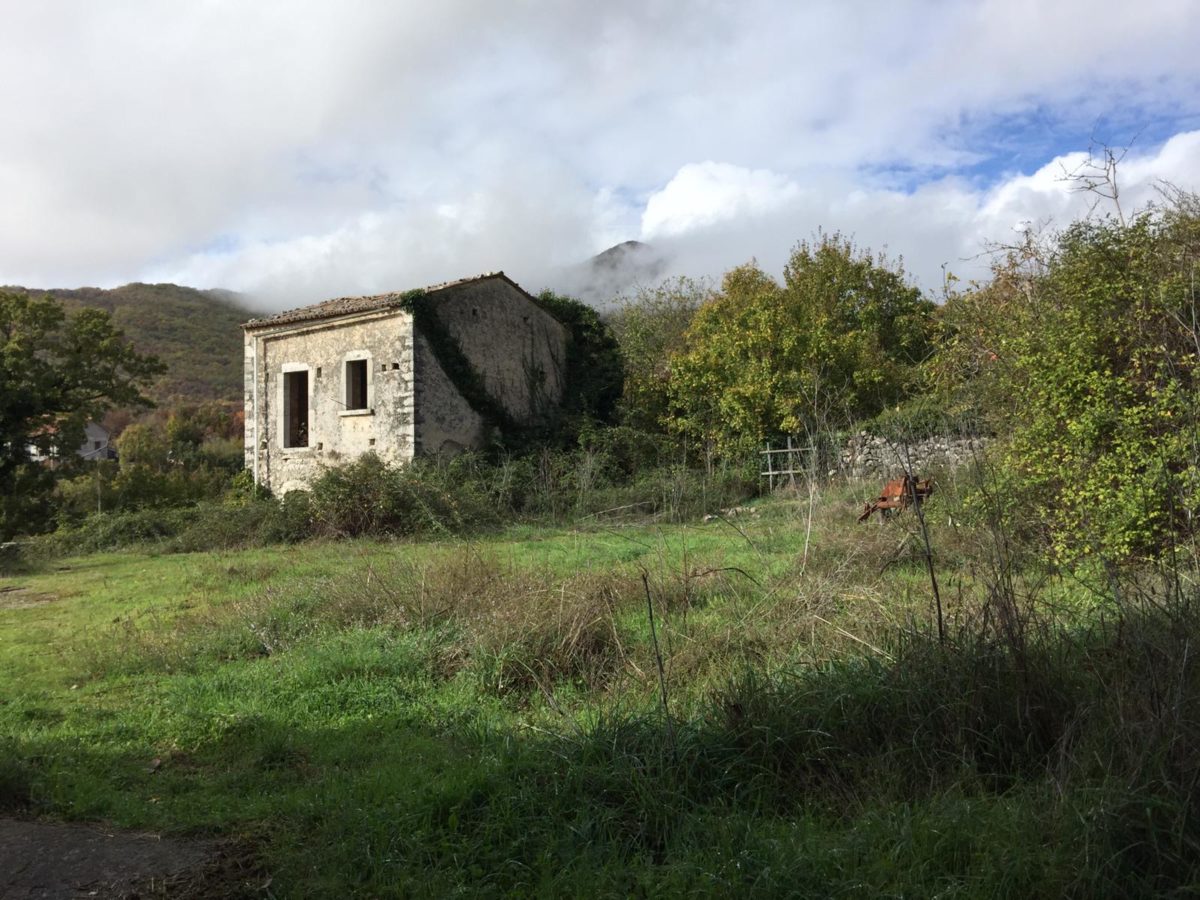
This three week residency was for the purpose of researching and developing new work for my project Casser Maison.
Taking Time/Prendendo Tempo
Travelling to Collemacchia via Naples I visited Pompeii, saw the frescoes at Villa Oplontis, where the Emperor Nero’s wife Poppea lived, and the Naples Archaeological Museum where countless objects recovered from Pompeii are housed . Everywhere you see what remains. Stone, walls, doorways, streets, clay amphora, clay tiles. A painted plaster layer. These ancient things give a glimpse of lives lived, of what was carried along and what was hoped would continue.
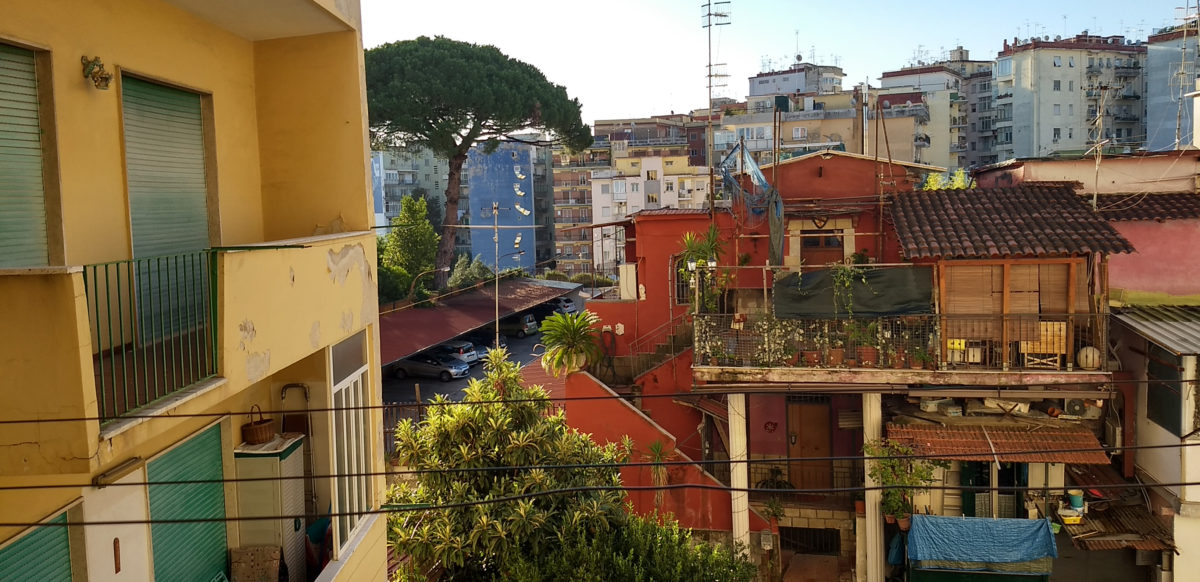
Collemacchia
Upon arrival at the Museum of Loss and Renewal in the beautiful secluded hamlet of Collemacchia I and my 5 co-residents were warmly welcomed by artists Tracy Mackenna and Edwin Janssen who established TMOLAR. It was the opportunity to meet my fellow residents dancer and artist Gabrielle New from Melbourne, Australia, artist Lynn Imperatore from Bristol, artist Steve Dutton also from Bristol, Filmmaker Richard Ashrowan from The Borders in Scotland and Kirsty Maguire, architect, artist and explorer from Dundee. There was chat about our backgrounds, our projects and suggestions of places to go and invitations to walk to discover the village and the landscape.
A group walk the next day with Tracy and Edwin led us up and around an old roman village, and more recent ruins of gun emplacements from when the juggernaut of WWII came through in 1944, alongside an ancient well still being used by farm animals, bee hive shaped stone shelters for shepherds. Bees, wild herbs, birch forest.
Though the Museum offered beautiful indoor studio spaces, the next day I set up an outdoor studio, a base from which I intended to explore, discover, get lost. It was my art home for the next three weeks.
Each day I packed my mobile studio in my rucksack and walked to the upper yard behind the village. The smell of pennyroyal and fennel, the hum of the bees permeated the October air. The daily appearance of mosquitoes at 4pm each day was my cue to pack up and head back for a glass of wine and a re-group with my fellow artists.
The restrictions imposed by working outside (considerably less than those presented by Scottish weather!) helped me to perform a kind of triage with my practice. A challenge each day to be direct and to see what would present itself whether it was to focus in and draw exactly what was before me (a fig tree in the sun) or to experiment with materials to see what I could get. Tracy’s suggestion to use ink made from soaking black arborio rice in water became a wonderful way to make prints with objects I had collected from the landscape.
Working in the same place each day allowed me to explore what was before me but always with the knowledge that there were hidden stories that I could not see. When Tracy told me that the house I had spent so much time drawing and painting had at one time been the headquarters of the SS when they occupied the village, a challenge to meaning was presented. What is observation and what is my role in recording it?
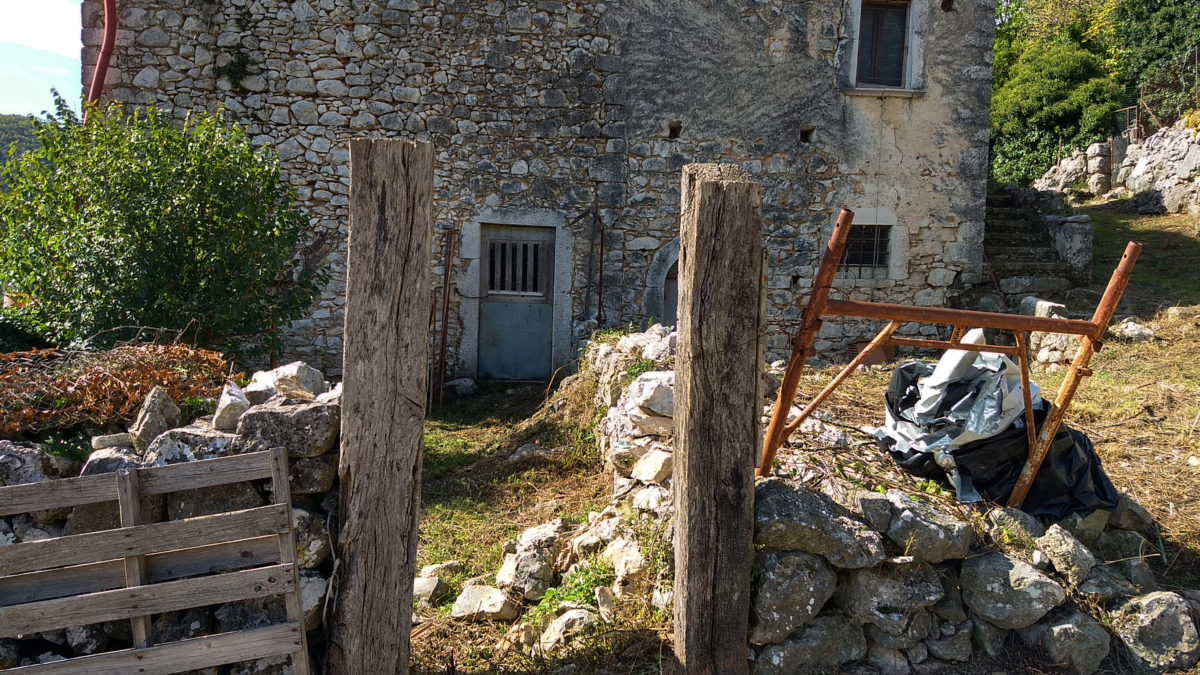
I walked up and out through the paths into the mountains. Experiencing a solitude I had not felt for many years. Drawing and painting here, observing the trees, the timeless ancient walls and ruins were again a reminder to meaning.
In the final week I walked to the abandoned part of Filignano called Piricocco or ‘peach’. I imagined because of the beautiful bruised colour still visible on the buildings ruined by earthquake. Visiting these formerly inhabited places brought me back to the beginning. What do we leave behind? What do we carry forward?
The Museum of Loss and Renewal was the perfect place to explore these ideas. My residency was a suspension of time to challenge myself to do things I have always wanted to do and experience a freedom that I hadn’t felt for a long time.
In my last few days in Collemacchia I created my own memory object, a small aedicula made from clay dredged from a nearby lake, covered in blue plaster, embedded with fennel seeds. The house shaped box was left to disintegrate on a hill overlooking the space where I had worked. A place where I had begun to uncover what remains important in art and in life. Directness, experimentation, the search for meaning. Tools to take forward.
